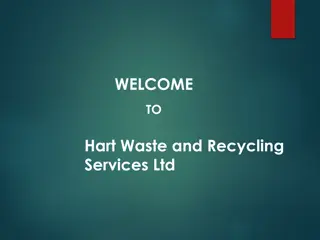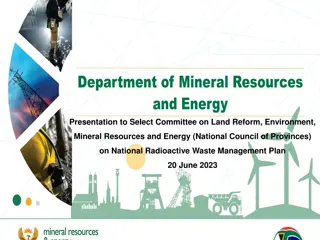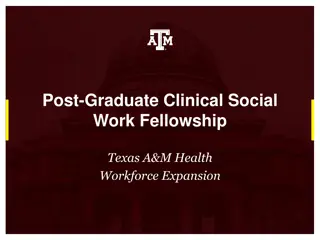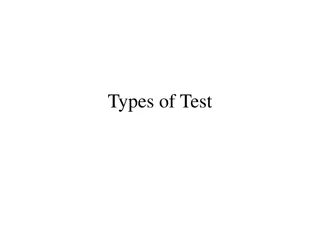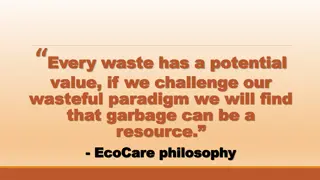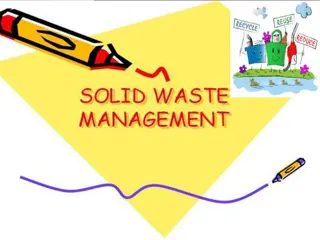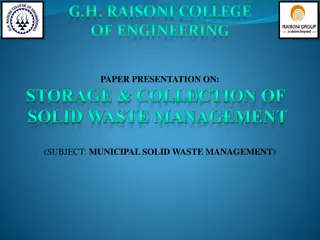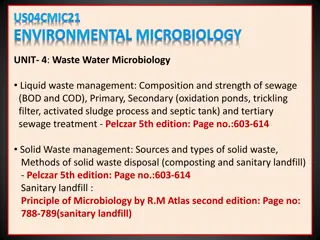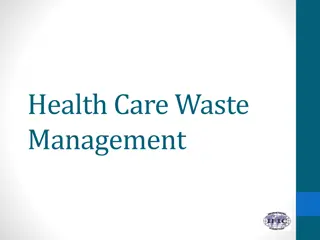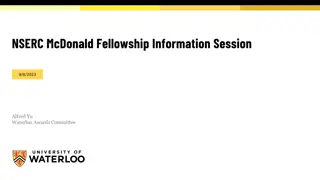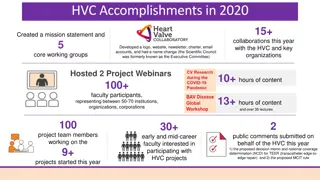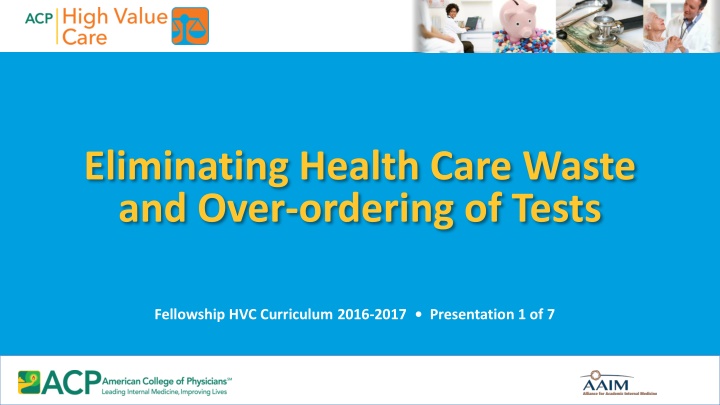
Eliminating Health Care Waste and Over-ordering of Tests Fellowship HVC Curriculum Presentation
This presentation delves into the alarming statistics of health care waste and over-ordering of tests, highlighting the excessive costs and inefficiencies in the system. It emphasizes the importance of high-value care, providing strategies to reduce unnecessary testing and improve diagnostic efficiency.
Download Presentation

Please find below an Image/Link to download the presentation.
The content on the website is provided AS IS for your information and personal use only. It may not be sold, licensed, or shared on other websites without obtaining consent from the author. If you encounter any issues during the download, it is possible that the publisher has removed the file from their server.
You are allowed to download the files provided on this website for personal or commercial use, subject to the condition that they are used lawfully. All files are the property of their respective owners.
The content on the website is provided AS IS for your information and personal use only. It may not be sold, licensed, or shared on other websites without obtaining consent from the author.
E N D
Presentation Transcript
Eliminating Health Care Waste and Over-ordering of Tests Fellowship HVC Curriculum 2016-2017 Presentation 1 of 7
Learning Objectives Define and explain the rationale for high value care Estimate harms and costs associated with common tests, recognizing both immediate and downstream harms and costs Eliminate testing that will not change management Identify validated decision support and other tools to increase accuracy and diagnostic efficiency Demonstrate diagnostic reasoning and management of uncertainty
What is the problem?1,2 We spend too much on health care 18% of U.S. GDP (2.7 trillion), $9,523 per capita annually Since 1970, health care spending is rising 2.4% faster than GDP Estimated $700 billion of health care waste annually Physicians responsible for 87% of wasteful spending Physicians must lead in addressing these problems and we are! (Choosing Wisely campaign) As subspecialty fellows, you are the bridge to high value care can you catalyze change?
Estimated Sources of Excess Costs in Health Care (2010)3 Category Estimate of Excess Cost Unnecessary Services Inefficiently Delivered Services Excess Administrative Costs Prices That Are Too High Missed Prevention Opportunities Fraud $210 billion $130 billion $190 billion $105 billion $ 55 billion $ 75 billion IOM 2010
Ordering More Services4 Tests Imaging Two areas of greatest expenditures and most rapid growth: Imaging and Tests
Low-Value Services Delivered Frequently 5 Low-value cancer screening Low-value diagnostic and preventive testing Low-value preoperative testing Low-value imaging Low-value cardiovascular testing and procedures Low-value surgical procedures Affected 25%-42% of Medicare beneficiaries Constituted 0.6%-2.7% of overall spending
Steps Toward High Value Care6 Step one: Understand the benefits, harms, and relative costs of the interventions that you are considering Step two: Decrease or eliminate the use of interventions that provide no benefits and/or may be harmful Step three: Choose interventions and care settings that maximize benefits, minimize harms, and reduce costs (using comparative-effectiveness and cost- effectiveness data) Step four: Customize a care plan with the patient that incorporates their values and addresses their concerns Step five: Identify system level opportunities to improve outcomes, minimize harms, and reduce health care waste Owens, D. Ann Intern Med. 2011;154:174-180.
Case #1 Ms. B. is a 57-year-old woman presenting to the ED with chest pain She has a history of recurrent UTIs; has no dysuria or urinary frequency Afebrile WBC count is 5.5 Should she have a routine urinalysis and urine culture?
Case #1 How would this test result alter your management?
Case #1 This patient underwent testing (although tests may not have been indicated) Urinalysis: cloudy, 11-50 WBC, 11-50 RBC, 2+ bacteria Urine culture: + >100,000 E. coli What is your management decision now that you have these test results?
Case #1 How would you manage this patient? Additional testing? Treatment?
Step 1: Understand the Benefits, Harms, and Costs of Diagnostic Testing What do you think the charges are for the following: Urinalysis? Urine culture? 7 days of oral antibiotics? PICC line and 14 days of IV antibiotics? Resources: healthcarebluebook.com, clearhealthcosts.com, www.newchoicehealth.com/Directory/Procedure, www.guroo.com What are some potential downstream costs ?
Case #1 The E. coli urine isolate was resistant to ampicillin and trimethoprim-sulfamethoxazole but susceptible to ciprofloxacin Ms. B. was discharged to complete 7 days of oral ciprofloxacin She returned 1 week after completing therapy with fever, abdominal pain, and watery diarrhea; a stool Clostridium difficile PCR assay was positive Ms. B. was intolerant to oral metronidazole and was switched to oral vancomycin x 10 days
Downstream Costs Calculate potential downstream costs of unnecessary testing and treatment What surprised you about these charges/costs? How will this impact your care decisions?
Steps Toward High Value Care6 Step one: Understand the benefits, harms, and relative costs of the interventions that you are considering Step two: Decrease or eliminate the use of interventions that provide no benefits and/or may be harmful Step three: Choose interventions and care settings that maximize benefits, minimize harms, and reduce costs (using comparative-effectiveness and cost- effectiveness data) Step four: Customize a care plan with the patient that incorporates their values and addresses their concerns Step five: Identify system level opportunities to improve outcomes, minimize harms, and reduce health care waste
Step 2: Decrease or Eliminate Care that Provides No Benefit and/or May be Harmful7
Case #2: Community-Acquired Pneumonia Mr. P., a 62-year-old man with hypertension and hyperlipidemia, presents to the emergency department with fever, chills, and a productive cough for 3 days T 38.5 C, BP 130/70, HR 110, RR 22, 02 sat 94% on RA Exam notable for: coarse breath sounds in the right mid-lung CXR: right lower lobe consolidation
Step 1: Benefits, Harms, Costs Evaluation and Management of CAP What is your work-up for a patient with CAP? What factors lead us to make orders or recommendations for our patients? Which labs or initial studies do you want to order? What are the benefits, harms, and costs of each test or intervention?
Case #2: Clinical Course Mr. P. was admitted for 3 days, during which time: Blood and sputum cultures, urine Legionella and pneumococcal antigens, and respiratory virus panel were ordered He was treated empirically with ceftriaxone and azithromycin IV RVP + rhinovirus; sputum culture showed normal flora; blood cultures were negative; urine Legionella and pneumococcal antigens were negative He was discharged on oral levofloxacin to complete a total of 7 days of antibiotic therapy
Step 2: Decrease or Eliminate Care That Provides no Benefit and/or May be Harmful What, if any, of the tests/consults/procedures may have been unnecessary in this case? Remember that High Cost Low Value, and likewise Low Cost High Value High-cost interventions may provide good value because they are highly beneficial (bronchoscopy for selected patients with pneumonia, screening colonoscopy) Low-cost interventions may have little or no value if they provide little benefit or increase downstream costs (BNP measurement in patient with clear heart failure, annual pap smears in an average-risk woman)
Approximate Charges 3 nights in the hospital: $5,016 Physician fees (per day): $200 Consulting physician fee (per day): $300 Electrolyte panel: $137 Daily x 3 = $411 CBC with differential: $137 Daily x 3 = $411 CXR: $604 Chest CT: $4,000 RVP: $1,113 Blood cultures (2): $406 Sputum culture: $131 Legionella urine Ag: $279 Pneumococcal urine Ag: $193 Ceftriaxone plus azithromycin x 3 days: $85 Levofloxacin 500 mg po daily x 4 days: $68
Approximate Costs (continued) What is the total cost for this patient s 3-day admission? At least $12,717 plus physician professional fees In addition to direct monetary costs, what are some harms and potential downstream costs of this patient s management? Examples: Repeated phlebotomy, IV catheter-related phlebitis or infection, DVT, etc.
Balancing Benefits with Harms Acknowledge the role of diagnostic uncertainty Recognize the power of an evidence-based history and physical examination Use validated decision support tools and other strategies to mitigate overuse and diagnostic error
Discussion Hospitalized patient What costs are necessary? What can be eliminated? What would be the most elegant approach to work-up and management? Outpatient What costs are necessary? What can be eliminated? What would be the most elegant approach to work-up and management? When managing a patient with CAP, consider utilizing a decision support tool (CURB- 65, Pneumonia Severity Index Scoring System) to assist in the decision to admit or treat as an outpatient.
Case #3 Present a case scenario in your specialty that may be managed in the inpatient or outpatient setting Are decision analysis tools available to assist in making the decision to admit (or not) patients with that condition? Compare charges/costs for care in the inpatient vs outpatient setting
Step 1: Benefits, Harms, Costs of Evaluation and Management What is your work-up for a patient with this illness? What factors lead us to make orders or recommendations for our patients? Which labs or initial studies do you want to order? What are the benefits, harms, and costs of each test or intervention?
Step 2: Decrease or Eliminate Care That Provides no Benefit and/or May be Harmful What, if any, of the tests/consults/procedures may have been unnecessary in this case? Remember that High Cost Low Value, and likewise Low Cost High Value High-cost interventions may provide good value because they are highly beneficial (bronchoscopy for selected patients with pneumonia, screening colonoscopy) Low-cost interventions may have little or no value if they provide little benefit or increase downstream costs (BNP measurement in patient with clear heart failure, annual pap smears in an average-risk woman)
Approximate Charges Calculate the approximate charges/costs associated with inpatient vs outpatient management of this condition What surprised you about these charges/costs? How will this impact your care decisions?
Uncertainty is a Driver of Waste8 Just to be safe + Want more information to reassure myself = 66%
Case #4 Think of a patient you recently cared for when you experienced uncertainty about his/her diagnosis or care plan How did you handle the uncertainty? Did uncertainty prompt you to order unnecessary tests and treatments? Share your case and how you handled it with your small group
Case #4 What tools are available to help you handle diagnostic or therapeutic uncertainty? 1. Specialty-specific validated clinical decision support tools 2. Specialist, attending, and colleague group input (case conference, tumor board, or group discussion) 3. Clinical observation of the patient/close follow-up 4. Guidance on how to communicate uncertainty with patients and families
Uncertainty Increases Resource Use9 We show that increased physician anxiety due to uncertainty and increased concern about disclosing uncertainty to patients translate into higher charges. Even after adjusting for multiple confounders, each standard deviation of change in several uncertainty scales corresponded to a change of mean charges of between 5% and 17%.
Summary Health care waste is a multi-billion dollar problem Every provider must carefully weigh costs (including downstream costs), harms, and benefits and order only those interventions that add value to a patient s care Eliminate routine testing by using the high value care framework Avoid unnecessary use of emergency department and hospital services wherever possible Acknowledge the role of diagnostic uncertainty Recognize the value of validated decision support tools
Commitment in Your Practice Using the Choosing Wisely lists and your own experiences, think about waste in your own practice and come up with at least one thing to start doing and one thing to stop doing to improve your delivery of high value care. START: STOP:
References 1. Sager A, Socolar D. Health Costs Absorb One-Quarter of Economic Growth, 2000-2005. Boston: Health Reform Program, Boston University School of Public Health; 2005. https://www.cms.gov/research-statistics-data-and-systems/statistics-trends-and- reports/nationalhealthexpenddata/downloads/highlights.pdf IOM. 2010. The healthcare imperative: Lowering costs and improving outcomes: Workshop series summary, Learning health system series. Washington, DC: The National Academies Press. Medicare Payment Advisory Commission Data Book. "Healthcare Spending and the Medicare Program ; 2012. Schwartz AL, et al. Measuring Low-Value Care in Medicare. JAMA Intern Med. 2014;174(7):1067-1076. Adapted from Owens, D. Ann Intern Med. 2011;154:174-180. ABIM Foundation, Choosing Wisely Campaign. www.choosingwisely.org (accessed 3/31/16). ABIM May 1, 2014. Unnecessary Tests and Procedures in the Health Care System. What Physicians Say About the Problem, the Causes, and the Solutions. Results from a National Survey of Physicians. www.choosingwisely.org/wp- content/uploads/2015/04/Final-Choosing-Wisely-Survey-Report.pdf Allison J, et al. The Association of Physician Attitudes about Uncertainty and Risk Taking with Resource Use in a Medicare HMO. Med Decis Making. 1998 18: 320. The online version of this article can be found at: http://mdm.sagepub.com/content/18/3/320 2. 3. 4. 5. 6. 7. 8. 9.

